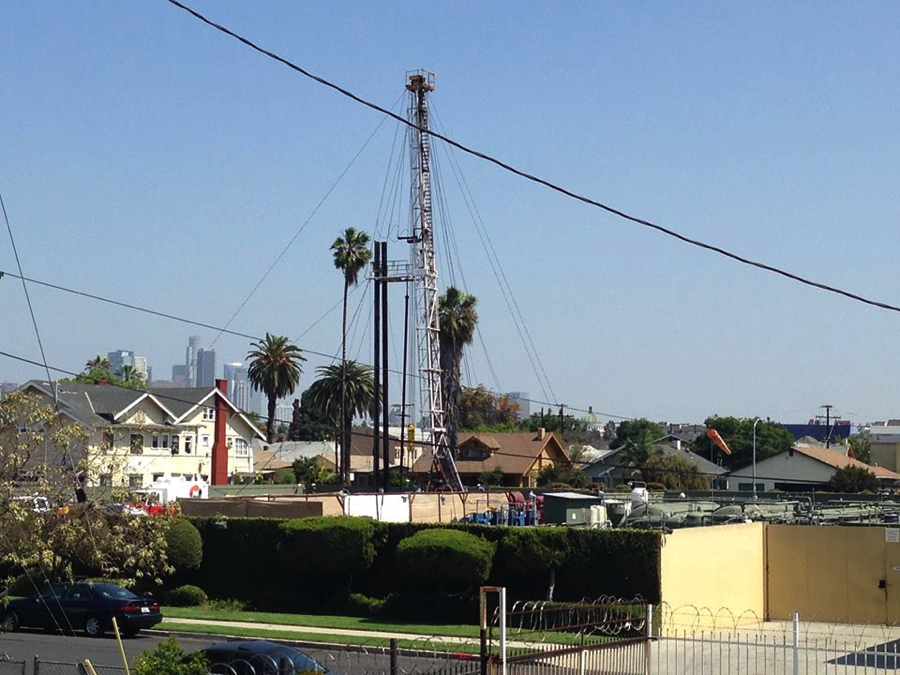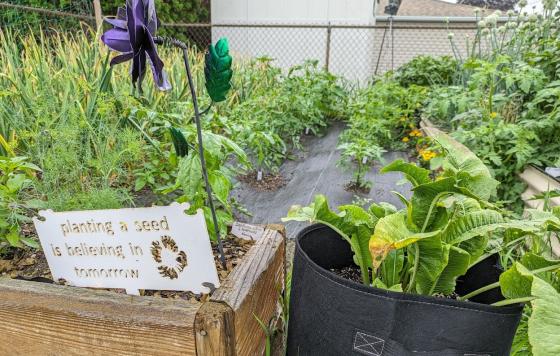
California is the third leading producer of oil in the country and although Kern County produces most of the state's oil, the Los Angeles area is the nation's largest urban oilfield. Oil production facilities are sited immediately next door to homes, schools, and shopping centers. One in three LA County residents live within one mile of an oil-drilling site—a pretty eye-watering statistic—and yet, no government agency or regulatory body has ever carried out a study of the health impacts on the city’s residents.
This was one of the disturbing facts that came up during a panel discussion of the health impacts of oil and gas production in California at a Sacramento forum on Monday April 18, organized by the Center for Biological Diversity and co-sponsored by Clean Water Action.
There may be no official studies but anecdotally, Angelenos are suffering from a variety of health issues commonly associated with proximity to oil operations, including increased risk of congenital heart disease, higher rates of birth defects and premature birth, and higher rates of respiratory problems.
“As a little girl I remember having nosebleeds and excruciating headaches,” said Sandy Navarro, a program manager for People Not Pozos, an environmental justice campaign initiative of Esperanza Community Housing. “Little did I know, I was living around the corner from an oil site.”
Navarro spearheaded an organizing project, which led to the closure of 21 acidized oil wells on a neighborhood site owned by the Archdiocese of Los Angeles and operated by Allenco Energy, back in 2014.
As grassroots campaigns go, it was pretty creative, and placed neighbors’ health concerns at the heart of its narrative. Here’s a video, for example, made by the project, petitioning Pope Francis to intervene to protect the health of local residents:
Not only have no studies been done on the health impacts of this kind of neighbourhood drilling for Los Angeles residents, but many chemicals used in oil and gas production are of unknown toxicity because the companies aren’t required to disclose what they’re using, said Seth Shonkoff, Executive Director of PSE Healthy Energy, an energy science and policy organization.
Shonkoff urged the audience, which included a number of legislature staffers from around the Capitol, to support “science-based surface setbacks”—limits on how close new facilities can be sited to residents of the city.
Right now there are no setback requirements at all from playgrounds, schools, or homes. “So you can just put these things in the backyard of a home,” said Barbara Sattler from the Alliance of Nurses for Healthy Environments, and a professor of public health at the University of San Francisco.
Setbacks are a good idea to reduce the adverse impacts of new oil and gas facilities. More problematic, however, is addressing the impacts of existing facilities. As Sandy Navarro said, the ultimate goal is to shut down oil production facilities that are harming people's health. It’s a goal with a 30-year time horizon, said Martha Dina Argüello, Executive Director of Physicians for Social Responsibility Los Angeles.
Right now, it sounds like nobody on the Los Angeles City Council supports setbacks, or closing down oil wells in the city, Argüello said. Yet, last week, the council did move to make changes to land use regulations that might have some impact.
Clearly, Angelenos are at the heart of the fight for their neighborhoods. But organizations like Clean Water Action can support those efforts. It was all good information and I’m grateful to the Center for Biological Diversity for organizing such a fascinating event.
If you’re interested in learning more, you can watch a full recording of the session here.



